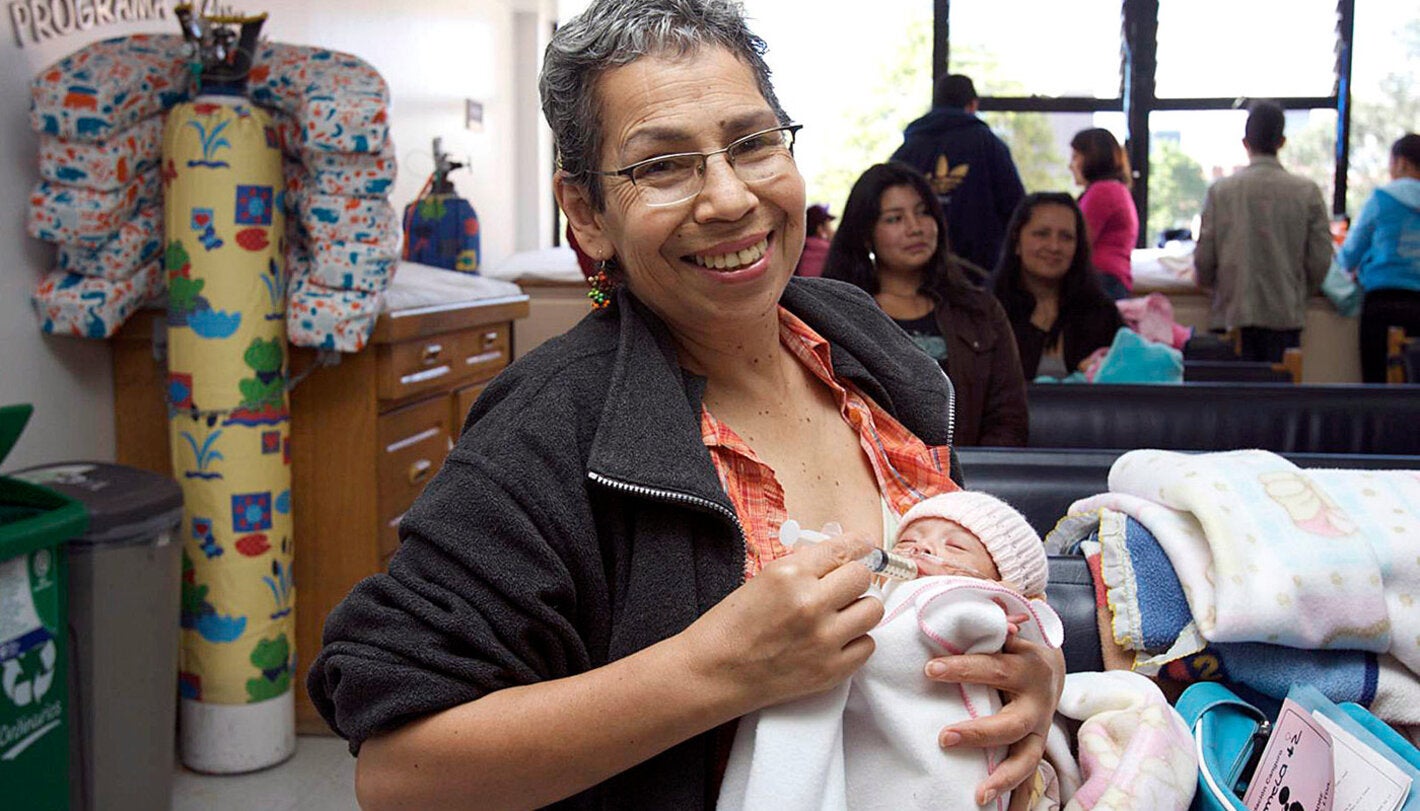
Washington, D.C., 22 March 2010 (PAHO/WHO) - Each year about 20 million infants of low birth weight are born worldwide. These premature babies impose a heavy burden on healthcare and social systems in developing countries.
What's the issue? Caring for low-birth weight babies requires complex methods.
Since medical care of low birth weight infants is complex and demands an expensive infrastructure and highly skilled staff, this is often a traumatizing experience for families. Either these families cannot afford the expensive neonatal care or neonatal care units are understaffed and ill equipped, typically with malfunctioning incubators, broken monitors, overcrowding and nosocomial infections. In these cases, neonatal care units are potentially deadly traps.
According to Kangaroo mother care: a practical guide (1st ed. Geneva: WHO, 2003) by the Department of Reproductive Health and Research of the World Health Organization, "almost two decades of implementation and research have made it clear that KMC is more than an alternative to incubator care. It has been shown to be effective for thermal control, breastfeeding and bonding in all newborn infants, irrespective of setting, weight, gestational age, and clinical conditions."
Research to Practice: Kangaroo Mother Care for low birth-weight infants
In 1978, Edgar Rey, a Colombian pediatrician concerned with the problems arising from a shortage of incubators and the impact of separating women from newborns in neonatal care units, developed Kangaroo Mother Care (KMC), a healthcare technique for low birth weight infants that is at least as effective as traditional care in a neonatal care unit.
In Kangaroo Mother Care, babies weighing 2000 g or less at birth and unable to regulate their body temperature remain with their mothers. Mothers themselves act as incubators, main source of stimulation, and feeding. How? Newborns are attached to mothers' chests in skin to skin contact and are kept upright 24 hours a day. Mothers can share the role of provider of the kangaroo position with other caregivers, especially the babies' fathers, without disrupting breastfeeding routines. The caregiver sleeps in a semi-sitting position. Evidence backs the effectiveness and safety of KMC in stable, preterm infants.
In low birth-weight infants who are unable to regulate their temperature, KMC is at least as safe and effective as traditional care with incubators. KMC delivers ideal conditions for stable, low birth-weight infants to thrive, strengthens parental participation and empowerment, and contributes to the healing process. Further, KMC delivers high quality care at a fraction of the cost of usual care and can be implemented in various facilities at different levels of care.
What next? Improving acceptance of and access to Kangaroo Mother Care units
KMC may be unsuitable for caregivers with important mental, cognitive, or behavioral problems. Some parents may feel intimidated or overwhelmed by caring for a premature baby. However, since KMC may be the best option if neonatal care units are unavailable, work is needed to improve the acceptance of the high value of these units.
Another issue is access to KMC units. Especially in rural areas, people would need to travel long distances to attend the KMC clinic and opportunity costs might be high. Further, harsh or risky environments (such as extreme climates, floods, or conflict areas) or dangerous traffic conditions may make it safer to remain in hospital so that no harm is made to the premature baby.
Nevertheless, it has been proven that during the one year follow up in the Bogotá study, no transport incidents between home and the KMC clinic were reported. To better cope with transport problems, KMC has been delivered in "Kangaroo wards". Mothers and infants typically stay there until they can be safely discharged home once frequent monitoring is no longer necessary. "Kangaroo wards" are the standard way of delivering KMC in several large facilities in both developing countries like the Jose Fabella Hospital in Manila and developed countries such as the Helsingborg Hospital, Sweden.
References:
- Juan Gabriel Ruiz-Peláez, Nathalie Charpak, Luis Gabriel Cuervo: Kangaroo Mother Care, an example to follow from developing countries, BMJ 2004;329:1179-1181 (13 November).
- Department of Reproductive Health and Research, World Health Organization. Kangaroo mother care: a practical guide. 1st ed. Geneva: WHO, 2003.
- Conde-Agudelo A, Díaz-Rossello JL, Belizan JM. Kangaroo mother care to reduce morbidity and mortality in low birthweight infants.
- Charpak N, Ruiz-Pelaez JG, Figueroa de CZ, Charpak Y. A randomized, controlled trial of kangaroo mother care: results of follow-up at 1 year of corrected age. Pediatrics 2001;108: 1072-9.
- Tessier R, Cristo M, Velez S, Giron M, de Calume ZF, Ruiz-Palaez JG, et al. Kangaroo mother care and the bonding hypothesis. Pediatrics 1998;102: e17.
- Lincetto O, Nazir AI, Cattaneo A. Kangaroo mother care with limited resources. J Trop Pediatr 2000;46: 293-5.



